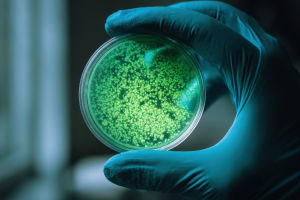Lykkers who’ve ever stood by the shoreline and taken a deep breath will know that unmistakable smell—the sharp, fresh, slightly salty scent that instantly evokes waves, sand, and sea life.
But this unique aroma isn’t just one thing. It’s actually a delicate blend created by the interaction of several natural compounds. Here’s what really gives the sea its unforgettable fragrance.
The Main Compounds Behind the Ocean’s Signature Scent
Dimethyl Sulfide (DMS)
This compound is at the heart of the classic sea smell. It delivers the briny, pungent odor often picked up near coasts, especially around areas with seaweed or marshes.
DMS is produced when tiny ocean plants known as phytoplankton die and release a compound used to protect themselves from sunlight. Bacteria feed on this compound and, in the process, produce DMS. Interestingly, some seabirds rely on this scent to locate areas rich in food.
Volatile Dictiopterenes
These are aromatic molecules released by certain seaweeds, especially when they're drying out on the shore. They play a crucial role in marine ecosystems as natural attractants between different algae types.
Their smell is what many recognize as the sharp, slightly sweet note found on beaches with drying or sun-cured seaweed. The scent may even remind some of coastal kitchens that use dried algae as seasoning or ingredient.
Bromophenols
This group of compounds is responsible for the marine aroma found in shellfish, such as mussels and shrimp. Bromophenols give off a slightly medicinal or iodine-like scent, often described as clean, oceanic, and mineral-rich.
These compounds don’t originate from the animals themselves, but from their interaction with marine creatures and seabed vegetation. They are absorbed through food chains and environmental exposure.
Why Wild Sea Creatures Smell More Like the Sea
Natural Diet and Environment
Marine animals that grow in open waters tend to carry a stronger ocean scent than their farm-raised counterparts. This is largely due to their exposure to bromophenol-rich environments.
For instance, sea creatures that feed on worms or algae from the ocean floor naturally absorb these scent compounds.
Salmon as an Example
Take Pacific salmon: those caught in the open sea have high concentrations of bromophenols and a noticeable ocean-like aroma. On the other hand, salmon raised in freshwater or near-shore farms often lack this distinct smell. Attempts to add bromophenols to aquaculture feed have had limited success—proving that the sea’s scent comes from more than just diet; it comes from the sea itself.
Why the Sea Smell is So Complex
A Natural Perfume with Many Layers
The scent of the sea isn’t just salty air—it’s a blend of organic processes involving life, death, and natural chemistry.
While one compound may dominate at times, the combination of DMS, dictiopterenes, and bromophenols forms a full sensory picture that changes depending on location, weather, and the season.
Changing Conditions, Changing Scents
During warm, sunny days with lots of seaweed exposed to air, dictiopterenes may be more noticeable. After storms or in nutrient-rich waters, DMS may dominate. In seafood markets or along working harbors, bromophenols might be the main note in the air.
To Summarize
The scent of the ocean is more than just a pleasing whiff—it’s a story told through molecules and marine life. For Lykkers who love being near the coast, understanding what makes up this natural aroma deepens the appreciation for every sea breeze.
From microscopic plankton to ocean-floor worms and sun-dried algae, the marine world weaves together a unique fragrance that can’t be bottled or easily copied. It truly smells like the sea—because it "comes" from the sea.


